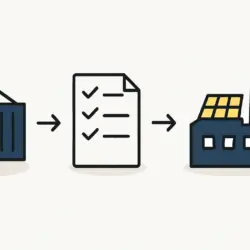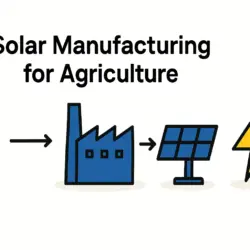Ecuador has approved construction of a 200 MW solar park in its central Sierra region, marking a significant step in the country’s energy transition. The project, led by Spanish company Grenergy Renovables, will require an investment of USD 178.5 million and is expected to be operational by 2027.
Ecuador solar park becomes nation’s largest renewable energy project
The Ministry of Energy and Mines has granted an environmental license for the development of Ecuador’s largest solar park, a 200 megawatt solar farm to be located in the province of Chimborazo. It will be developed by Grenergy Renovables, a prominent player in the renewable energy sector.
This solar park is a key part of the National Electricity Plan 2022-2031, which aims to add 500 MW of solar capacity by 2027. The initiative is crucial to Ecuador’s energy transition and its commitment to increasing the share of renewables in its energy mix. Currently, 80% of Ecuador’s electricity comes from renewable sources, with hydroelectric power as the dominant source.
Requiring an investment of USD 178.5 million, the construction phase is expected to create around 400 jobs and generate approximately USD 12 million in state income tax. Once operational, the park will supply clean electricity to 130,000 homes, contributing significantly to the country’s energy needs.
Ready to make big Profits?
The solar Industry is Booming
WE HELP NEWCOMERS to the solar industry start their own solar module production line. Customers can make BIG PROFITS by selling modules and finding investors, without wasting money and time on things they don't need!
Economic and environmental impact of Ecuador solar park
This landmark solar park is poised to deliver significant economic and environmental benefits. According to the Ministry of Energy and Mines, the project will create vital jobs, generate state income, and provide clean energy to thousands of households. It will also help reduce carbon emissions, aligning with Ecuador’s commitment to combating climate change.
In addition to the solar park, the Ministry of Energy and Mines has also granted permits for the 200 MW Villonaco wind farm, which will be developed by China’s State Power Investment Corporation. Located in Loja, southern Ecuador, the wind farm will require an investment of approximately USD 181 million and is expected to generate around 700 jobs during its construction.
International partnerships driving Ecuador’s renewable energy development
Both the solar park and the wind farm are part of a broader national effort to diversify Ecuador’s energy sources and reduce its reliance on fossil fuels. These projects are being developed under the Interconnection Agreement with the National Transmission System, which aims to strengthen the country’s energy infrastructure.
These renewable energy projects mark a positive step toward achieving energy sovereignty and sustainability in Ecuador. The Ministry of Energy and Mines has emphasized that developing renewable energy is not only about economic benefits but also about ensuring a sustainable future for the country.
The success of these projects will depend on continued support from the government, the private sector, and international partners. The Ministry of Energy and Mines has called for ongoing collaboration to ensure their timely completion and to maximize their benefits for the nation.
A bright future powered by Ecuador solar park and renewables
As Ecuador advances its renewable energy agenda, the country is positioning itself as a leader in sustainable development in the region. The new solar park and wind farm are just the beginning of a broader strategy to expand renewable capacity and reduce greenhouse gas emissions.
In the coming years, Ecuador is expected to continue investing in renewable energy projects, including wind, solar, and hydroelectric power. The government has set ambitious targets for renewable energy, and the construction of these large-scale projects is a key step toward achieving those goals.
With the completion of the solar park and wind farm, Ecuador will be well on its way to achieving its renewable energy targets and reducing its carbon footprint. These projects demonstrate the country’s firm commitment to a sustainable and prosperous future.



